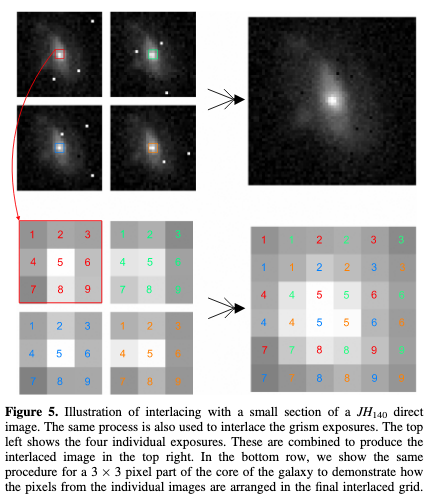Story
Minimal: As a user I want to get a 2D grism spectrum extracted for inspection and for further modeling and analysis.
Better: In addition, produce diagnostic PNGs that show the individual spectra.
Inputs
Case A: A set of grism images (FLT/FLC) at different dither positions (same visit)
Case B: Case A + also a set of grism images at a different position angles (different visits) of the same field.
Outputs
A single file which contains all the cutouts
Computations
Drawbacks
Users need to keep in mind the limitations of co-adding 2D and 1D grism images! In the general case, this procedure cannot be done correctly because the spacial AND the spectral coordinate cannot be simultaneously interpolated on the same grid for each spectrum. You can do just the spacial axis (see emission line maps) or the spectral (and smooth over the spacial variations) but not both. There are corner cases when a reasonable co-addition can be done:
- Spectra at the same PA (from images within the same visit) can be coadded somewhat reasonably if the dithers are not very large. Since the disperion functions are pretty slowly varying as a function of position on the detector, cutouts from FLTs within the same visit can be coadded. Also, when the spectra are at the same PA, the spacial axis is the same and there will be little smoothing of the morphology of emission lines (due to the distortion correction).
- A possible approach to co-addition of spectra at the same PA without resampling is the interlacing method used by 3D-HST (Momcheva et al., 2017). The benefit is that there is no resampling of the flux or errors of the pixels and therefore bad pixels/missing data/etc. can be properly accounted for rather than creating spurious features in the spectra. Since this is a rare corner case, I don't think this method even merits effort because it cannot be generalized:
- Continuum spectra can be coadded across different PAs if there is no useful information in the spacial axis. It is probably better that 1D spectra are extracted form each FLT and then co-added so that the errors can be propagated without resampling.


